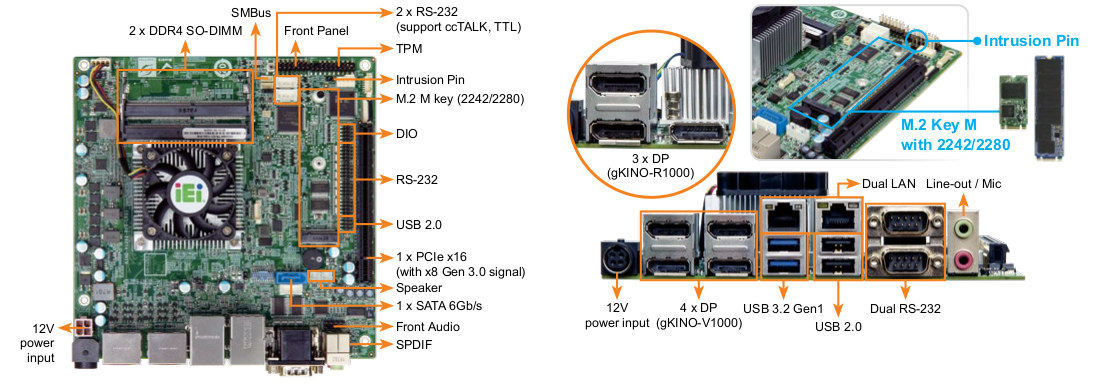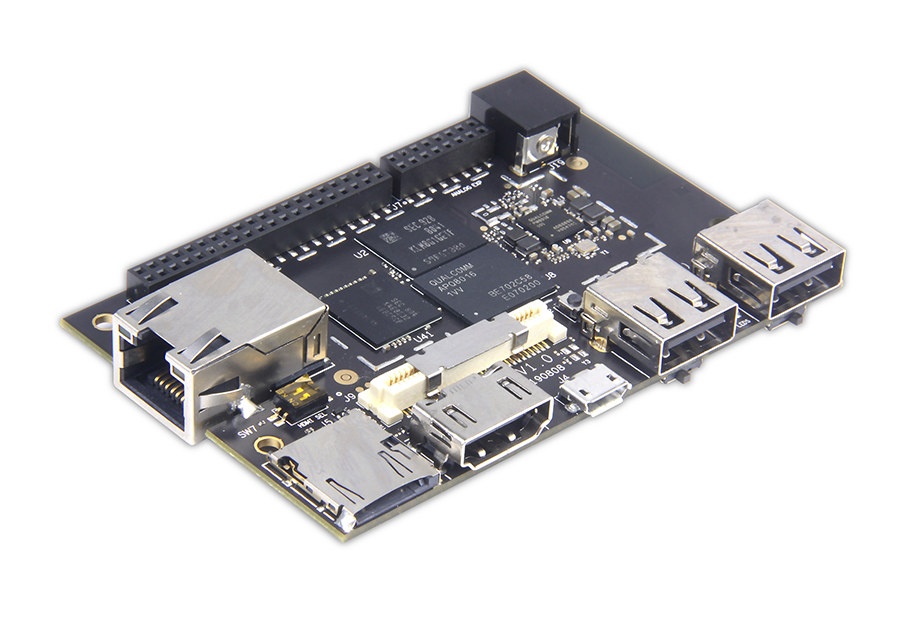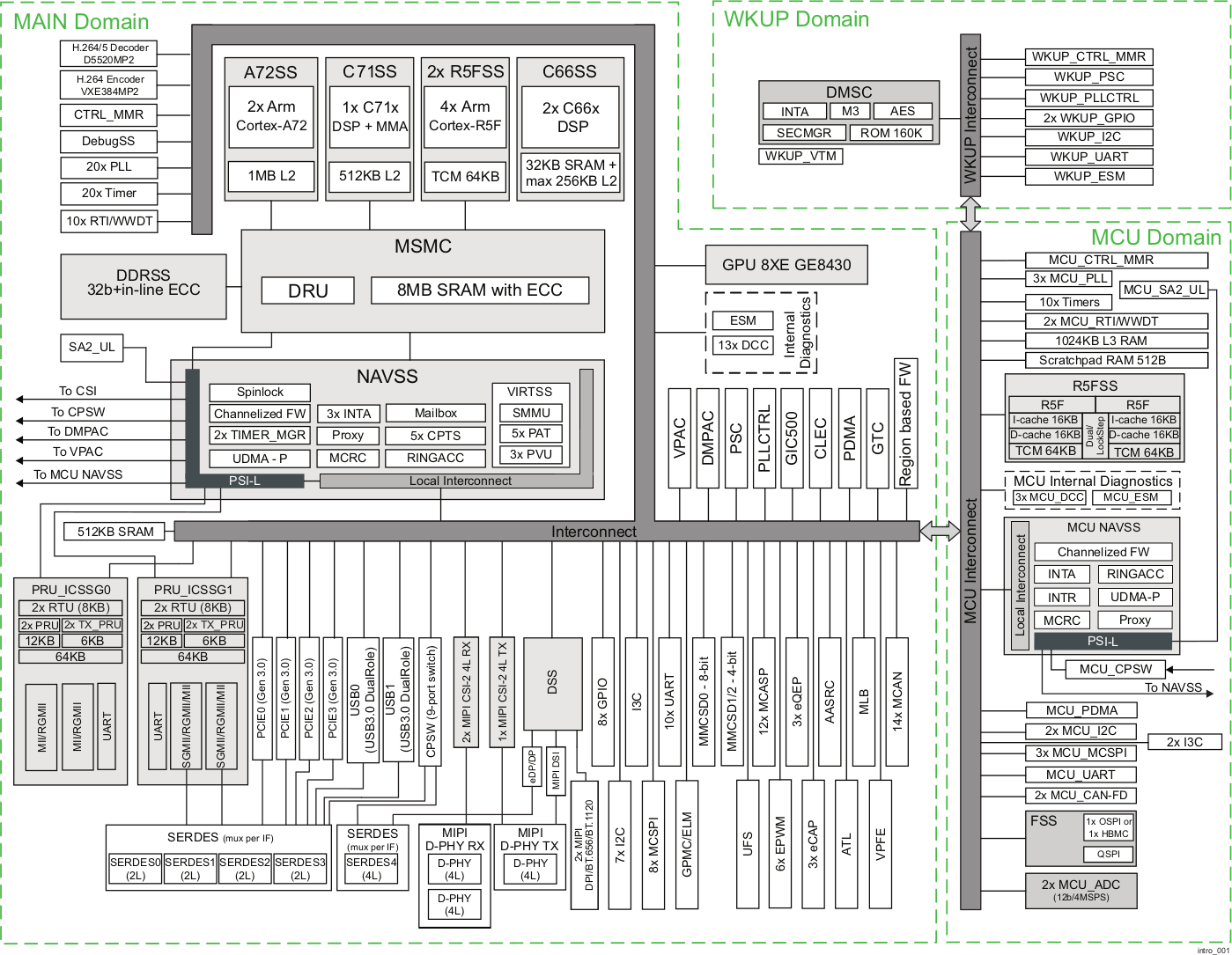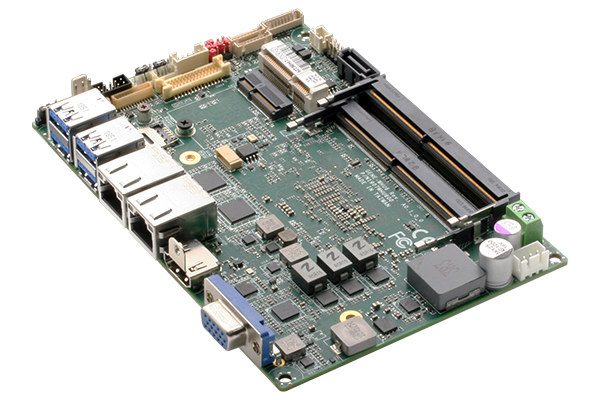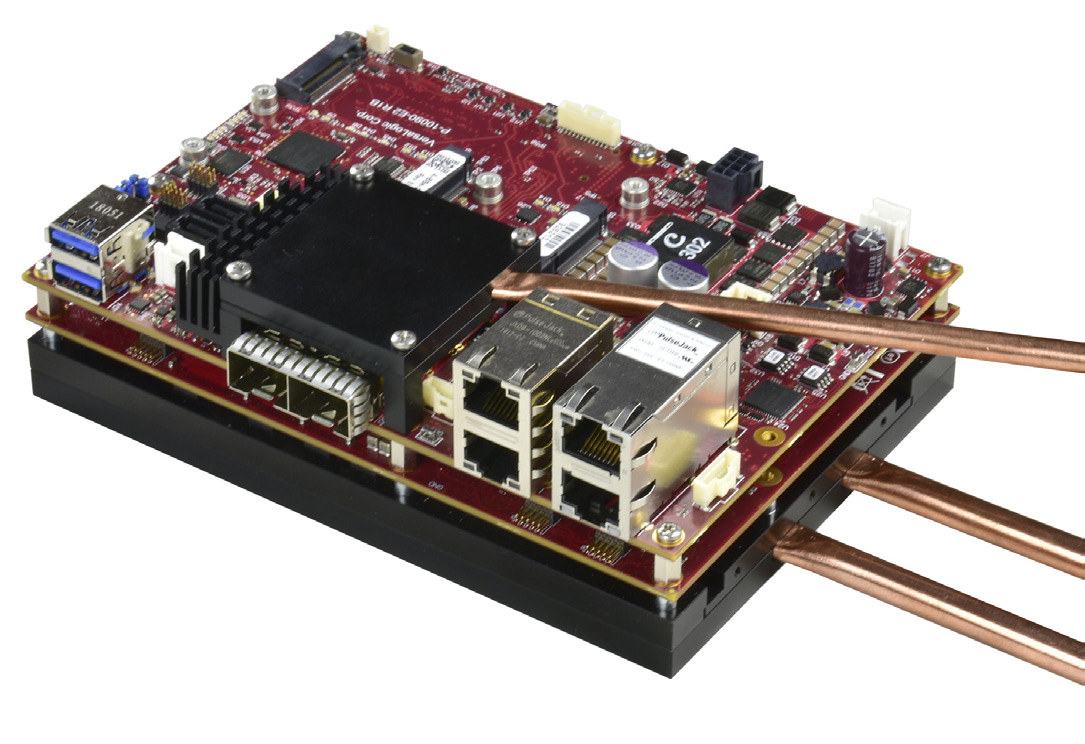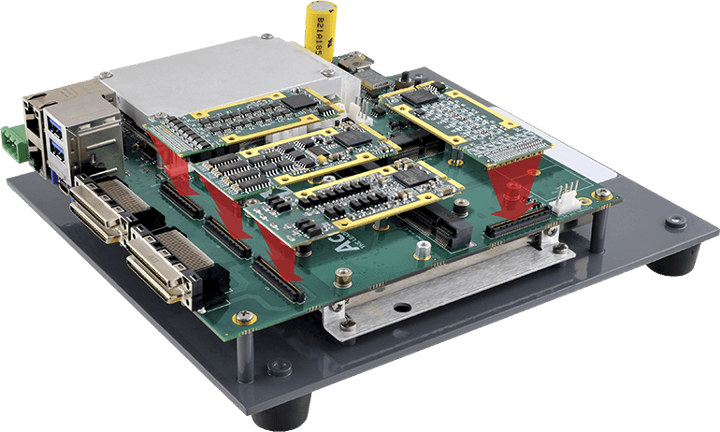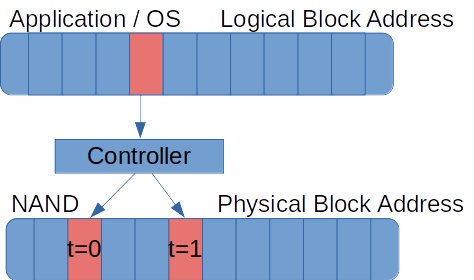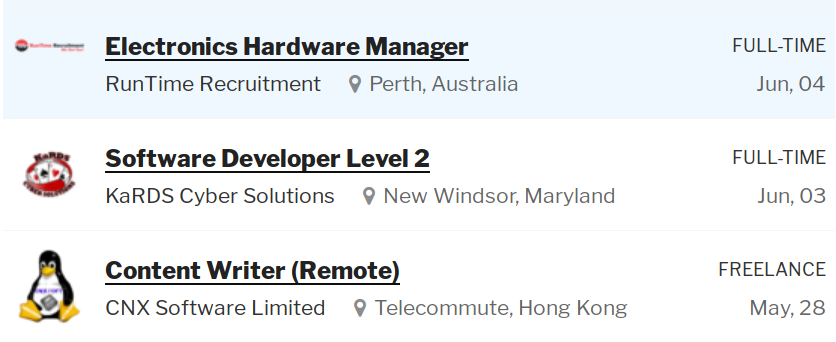While we reported earlier AMD Ryzen Embedded V2000 is coming later this year, companies are still launching boards with the previous generation AMD Ryzen Embedded V1000 or R1000 processors. ICP Germany has just announced four AMD Ryzen Embedded Mini-ITX boards with gKINO-V1000 boards equipped with either Ryzen Embedded V1202B or V1605B and gKINO-R1000 SBC’s coming with either Ryzen Embedded R1505G or R1606G processors. gKINO-V1000/R1000 key features and specifications: SoC gKINO-V1605B-R10 SBC – AMD Ryzen Embedded V1605B quad-core processor @ 2.0 / 3.6 GHz with 2MB cache, Radeon Vega8 GPU; 12-25W TDP gKINO-V1202B-R10 SBC – AMD Ryzen Embedded V1202B dual-core processor @ 2.3 / 3.2 GHz with 1MB cache, Radeon Vega3 GPU; 12-25W TDP gKINO-R1606B-R10 SBC – AMD Ryzen Embedded R1606G dual-core processor @ 2.6 / 3.5 GHz with 1MB cache, Radeon Vega3 GPU; 12-25W TDP gKINO-R1605B-R10 SBC – AMD Ryzen Embedded R1505G dual-core processor @ 2.4 / 3.3 GHz with […]
Developer Board 4 V3 Brings Gigabit Ethernet to 96Boards Snapdragon 410E SBC
The original 96Boards CE compliant Dragonboard 410c development board launched in 2015 was followed by Geniatech Developer Board IV the following with many of the same features plus the addition of a Fast Ethernet port and an RTC battery, and an 85x60mm form factor all of which made it non-compliant with the 96Board specs. Geniatech has now introduced a new Developer Board 4 V3 version, that like the V2 model integrates a Gigabit Ethernet port and WiFi 5 connectivity, but the design has been modified get closer to 96Boards CE compliance with 85x54mm dimensions, and the same ports’ arrangement as on 96Boards CE boards, excluding the Ethernet RJ45 jack that is out of (96Boards CE) specs. Geniatech Developer Board 4 V3 specifications: SoC – Qualcomm Snapdragon 410E (APQ8016E) quad-core ARM Cortex A53 processor @ 1.2 GHz with Adreno 306 GPU System Memory – 1 or 2 GB LPDDR3 @ 533MHz […]
J721E DRA829/TDA4VM/AM752x – Texas Instruments Cortex-A72 based Monster SoC’s
Texas Instruments unveiled their first 64-bit processor in 2018 with TI AM654 “Keystone III” quad-core Arm Cortex-A53 + dual lockstep Cortex-R5F processor designed for general embedded and industrial applications. The company is now working on a more powerful processor with J721E SoC with Cortex-A72 cores belonging to the K3 Multicore SoC architecture platform appearing in TI Linux git repository. Ti J721E is a monster of an SoC, not necessarily in terms of CPU processing power, but it has an amazing amount of features and peripherals. I’m not going to list all specifications of this monster SoC, and we’ll do with J721E highlights instead: CPU Dual Cortex-A72 up to 2.0 GHz in a single cluster Up to three clusters of lockstep capable dual Cortex-R5F MCUs @ 1.0 GHz AI Accelerator / DSP Deep-learning Matrix Multiply Accelerator (MMA) @ up to 1.0 GHz (8 TOPS for 8-bit inference) C7x floating-point Vector DSP […]
3.5″ SubCompact SBC Leverages Intel Whiskey Lake Processor for Embedded & AI Applications
AAEON already has several Whiskey Lake SBCs in its portfolio including PICO-WHU4 Pico-ITX board for AI & edge computing and UP Extreme SBC targeting the maker community and enthusiasts. The company’s latest GENE-WHU6 is a features-rich 3.5″ SubCompact SBC offered with a choice of Intel Core i3/i5/i7 and Celeron Whiskey Lake Embedded processors and designed for embedded and artificial intelligence applications thanks to an M.2 socket accepting AI accelerator cards. AAEON GENE-WHU6 specifications: SoC (one or the other) Intel Celeron 4305UE dual-core processor @ 2GHz with Intel UHD Graphics 610; 15W TDP Intel Core i3-8145UE dual-core/quad-thread processor @ 2.2GHz / 3.9GHz (Turbo) with Intel UHD Graphics 620; 15W TDP Intel Core i5-8365UE quad-core/octa-thread processor @ 1.6GHz / 4.1GHz (Turbo) with Intel UHD Graphics 620; 15W TDP Intel Core i7-8665UE quad-core/octa-thread processor @ 1.7GHz / 4.4GHz (Turbo) with Intel UHD Graphics 620; 15W TDP System Memory – 2x 2400 MHz Dual […]
Versalogic Grizzly Embedded Server Board is Powered by a 16-Core Intel Atom C3958 Processor
Launched in 2016, Intel Atom Denverton processors are usually found in motherboards for low power servers hosted in data centers as well as in network appliances. But Versalogic Grizzly embedded server board fitted with the 16-core Atom C3958 Denverton processor aims specifically at embedded systems with applications ranging from smart-grid, and smart-city applications, to transportation, security, and defense operations. Versalogic Grizzly (VL-ESU-5070) key features and specifications: Processor – Intel C3958 16-core Denverton server-class processor @ 2.0 GHz System Memory – 4x SO-DIMM sockets for up to 128 GB DDR4 of ECC memory Storage – 2x SATA 3 ports, bootable mSATA socket, bootable M.2 NVMe SSD socket Networking – 2x 10GbE SFP+ ports (copper or fiber), 4x Gigabit Ethernet ports Video output – None, but optional VGA/LVDS mini PCIe card available Audio – No on-board audio, but optional VL-ADR-01 audio interface available USB – 2x USB 3.0 host ports Serial – […]
Acromag COM Express Type 10 Mini-ITX Carrier Card Supports Four Acropack mini PCIe Modules
Acromag, a company based in Michigan and specialized in the industrial I/O market, has recently launched ACEX4041 COM Express Type 10 Mini-ITX carrier card which supports up to four of the company’s AcroPack mini-PCIe I/O modules. ACEX4041 COM Express Type 10 Mini-ITX Carrier Card The Mini-ITX form factor of the board enables it to interfaces four plug-in AcroPack I/O modules to an Intel Atom E3950 (Apollo Lake) CPU module with provisions for both M.2 and SATA SSD data storage and a variety of peripherals on-board. ACEX4041 specifications: SoM Compatibility Electrical and mechanical interface for industry-standard COM Express Type 10 Mini (55mm x 84mm) CPU modules with four PCIe lanes configured as an x4 port for optimal performance. Current CPU Option – Intel Atom E3950 quad-core, 1×4 PCIe configuration, 1.6/2.0GHz (Turbo) , 4GB RAM, 12W. PCIe Switch – 9-port 12-lane PCIe Gen 2 switch expands the single host PCIe x4 port […]
Wear Estimation for Devices with eMMC Flash Memory
CNXSoft: This is a guest post by Marcel Ziswiler, Platform Manager – Embedded Linux, Toradex and Leonardo Graboski Veiga, Technical Marketing Engineer, Toradex related to Marcel’s upcoming talk “Wear Estimation for Devices with eMMC Flash Memory” at the Embedded Linux Conference 2019 later this month. Flash memory has been an important topic in embedded systems for decades. It allows for drastic improvements to the size and robustness of electronic devices compared to other storage technologies. Other benefits of flash storage include a lack of moving parts and reduced power consumption. However, the challenges that come with flash memory are not as widely publicized in consumer electronics. Among them are limited durability and greater software complexity. As shown in Figure 1, flash memory is everywhere in our daily lives, ranging from devices used specifically to store data, such as thumb drives, SD cards and SSDs, to other consumer electronics that use […]
Launching Embedded Systems Jobs Board and Company Database
CNX Software writes news, reviews and tutorials about embedded systems, open source, or other topics useful to makers and companies, so we thought it might be useful to get a place where embedded systems companies can be listed and publish related jobs. For that reason, we’ve now designed and launched an embedded systems jobs board in order to help companies find employees or freelancers that can help them achieve their goals. Even if companies have no open positions right now, they are invited to add themselves to the list of companies as they may also be contacted by prospective customers if they wish too. Please, only relevant companies, as we reserve the right to delete entry’s for your spouse’s hair salon or bakery ;). Once a company is registered they can post jobs in one of five categories: Hardware, Software, Support & Documentation, Manufacturing, and Sales & Marketing. Let me […]


